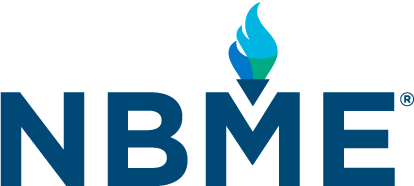
RESEARCH LIBRARY
RESEARCH LIBRARY
View the latest publications from members of the NBME research team
Journal of Educational Measurement: Volume 57, Issue 2, Pages 216-229
This article presents two generalizability-theory–based analyses of the proportion of the item variance that contributes to error in the cut score. For one approach, variance components are estimated on the probability (or proportion-correct) scale of the Angoff judgments, and for the other, the judgments are transferred to the theta scale of an item response theory model before estimating the variance components.
Academic Medicine: Volume 95 - Issue 1 - p 111-121
This paper investigates the effect of a change in the United States Medical Licensing Examination Step 1 timing on Step 2 Clinical Knowledge (CK) scores, the effect of lag time on Step 2 CK performance, and the relationship of incoming Medical College Admission Test (MCAT) score to Step 2 CK performance pre and post change.
Academic Medicine: July 2019 - Volume 94 - Issue 7 - p 926-927
A response to concerns regarding potential bias in the implementation of machine learning (ML) to scoring of the United States Medical Licensing Examination Step 2 Clinical Skills (CS) patient notes (PN).
Academic Medicine: March 2019 - Volume 94 - Issue 3 - p 371-377
Schools undergoing curricular reform are reconsidering the optimal timing of Step 1. This study provides a psychometric investigation of the impact on United States Medical Licensing Examination Step 1 scores of changing the timing of Step 1 from after completion of the basic science curricula to after core clerkships.
CBE—Life Sciences Education Vol. 18, No. 1
This article briefly reviews the aspects of validity that researchers should consider when using surveys. It then focuses on factor analysis, a statistical method that can be used to collect an important type of validity evidence.
Academic Medicine: March 2019 - Volume 94 - Issue 3 - p 314-316
The United States Medical Licensing Examination Step 2 Clinical Skills (CS) exam uses physician raters to evaluate patient notes written by examinees. In this Invited Commentary, the authors describe the ways in which the Step 2 CS exam could benefit from adopting a computer-assisted scoring approach that combines physician raters’ judgments with computer-generated scores based on natural language processing (NLP).
Investigación en Educación Médica, Vol. 8, Núm. 29, 2019
Journal of Educational Measurement: Volume 55, Issue 4, Pages 564-581
Smoothing techniques are designed to improve the accuracy of equating functions. The main purpose of this study is to compare seven model selection strategies for choosing the smoothing parameter (C) for polynomial loglinear presmoothing and one procedure for model selection in cubic spline postsmoothing for mixed‐format pseudo tests under the random groups design.
Front. Psychol. 9:1988
In their 2018 article, (T&B) discuss how to deal with not reached items due to low working speed in ability tests (Tijmstra and Bolsinova, 2018). An important contribution of the paper is focusing on the question of how to define the targeted ability measure. This note aims to add further aspects to this discussion and to propose alternative approaches.
Journal of Pain and Symptom Management: Volume 56, Issue 3, p371-378
This article reviews the USMLE step examinations to determine whether they test the palliative care (PC) knowledge necessary for graduating medical students and residents applying for licensure.
